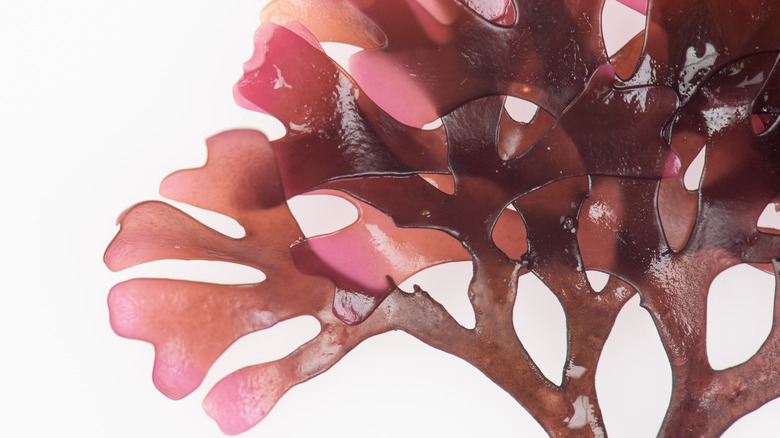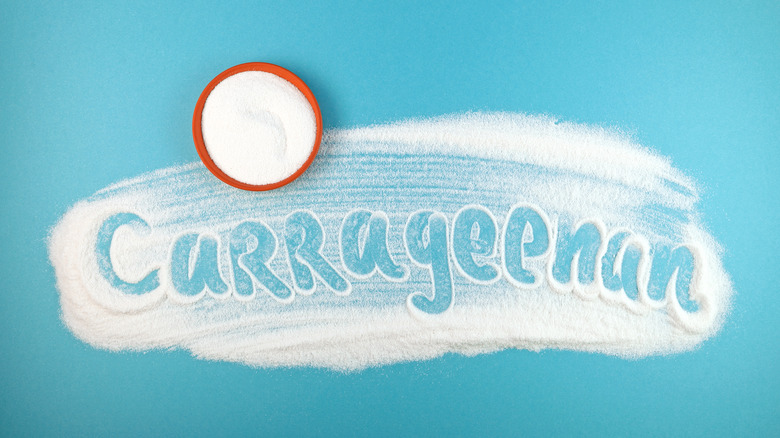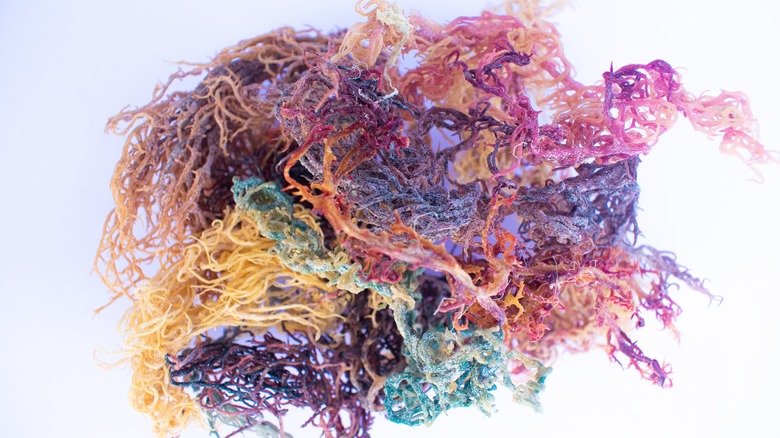How To Use Sea Moss Powder To Totally Transform Your Recipes
The idea of dessert rarely conjures thoughts of the ocean, or more specifically, the algae growing in the ocean. So it may come as a surprise to learn that sea moss contains the key to deliciously thick ice cream, cheesecake, frosting, and more. Carrageenan, a polysaccharide with incredible binding and thickening qualities, is derived primarily from red Irish sea moss (although it can be extracted from many forms of algae). It's one of the more common additives for thickening foods, and if you're not using it in your cooking already, you may want to reconsider.
In the world of plant-based diets, many great strides have been made in finding a substitute for animal-derived products. Sea moss extract (or more commonly, carrageenan) is used as a gelatin substitute in many recipes. Whether you're a lifetime vegan or simply exploring plant-based options, you may want to consider using carrageenan as a substitute for gelatin in your next mirror glaze or homemade Easter marshmallows. That said, do look for conversion charts online before diving into substitutions.
The upsides and downsides of carrageenan
Red sea moss is harvested, cleaned, and boiled to separate the carrageenan from the fibrous moss. Once separated, the carrageenan extract is processed with potassium chloride to activate its gel-like binding qualities. That gel is then pressed, dried, and milled into a powder, which is how you'll most likely encounter it at the market. Unlike Irish sea moss, carrageenan or sea moss extract is devoid of all the nutritional value that its unprocessed form contains. Unrefined sea moss is chock-full of vitamins and minerals; there's evidence that sea moss may improve immunity as well as aid in preventing dementia — that is, as long as you're eating pretty big portions of the stuff. However, if you're looking for an effective thickener to use purely to enhance texture in your favorite recipes, you'll be hard-pressed to find better than carrageenan.
According to Healthline, carrageenan has been somewhat vilified in recent years — whether or not it's safe to consume regularly is hotly debated. There is some evidence that carrageenan is highly inflammatory and can cause or exacerbate conditions such as IBS, arthritis, and food allergies. It's even been purported that the algae extract is carcinogenic and long-term consumption can lead to colon and bowel cancer. The FDA still allows for carrageenan additives, but if you're concerned about these issues maybe limit your consumption to be on the safe side.
Incorporating sea moss into your cooking
There are three kinds of carrageenan: Kappa, iota, and lambda. Each possesses a different chemical composition, creating different textures and uses among the varieties. Kappa-carrageenan thickens when potassium is introduced, creating a gel texture suitable for emulsion and suspension. Lambda-carrageenan does not gel and is used to thicken exclusively; you'll find it most often in dairy products like yogurt or ice cream.
Iota carrageenan works well as a vegan gelatin substitute, and pairs especially well with dairy products. There are two basic rules for using carrageenan powder: It disperses best in cool liquids and hydrates best when warm. When making classic baked cheesecake, for example, you can mix the carrageenan in with the other dry ingredients; then add the eggs, milk, and cream cheese. If you want to use carrageenan to thicken a liquid like chocolate milk, blend the liquid and powder together while the milk is still cool, then heat above 70 degrees Fahrenheit. The milk will thicken as it cools back down. Follow the same process when making a gel with carrageenan; just add more of it to achieve the proper texture.


